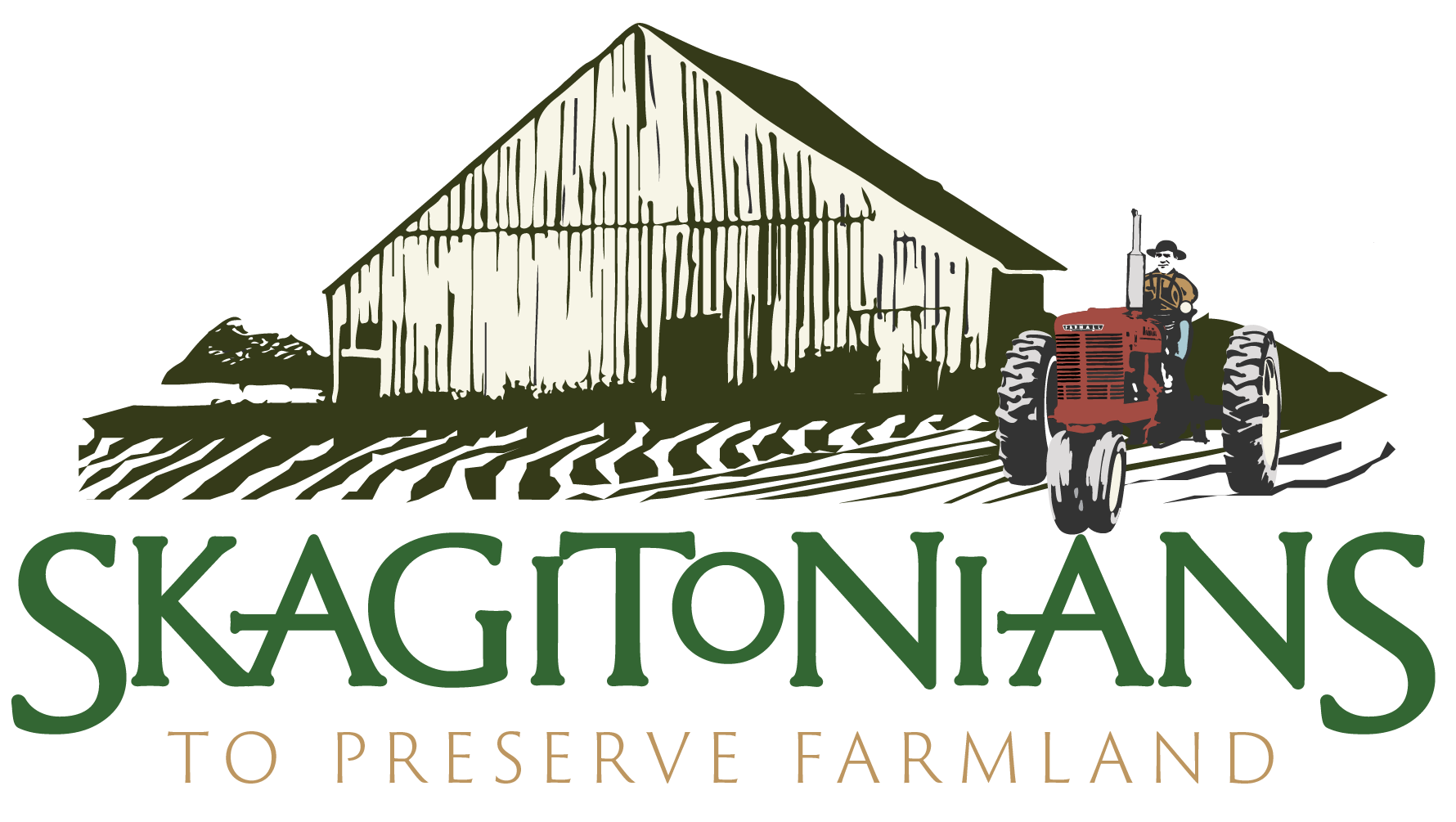SPF Crop Identification Signs Remind Us: We Live in a Very, Very Special Place
“I love crop signs!”
Volunteer Bob Raymond hears that almost universally when people find out he coordinates the volunteers who post the crop identification signs around Skagit Valley.
Whether you are a local resident or a visitor, you cannot miss the bright signs. They are posted beside fields announcing Spring Wheat, Brussels Sprouts, Potato, Beet Seed, or something else. With nearly 100 commercial crops that Skagit farmers grow, it can be hard to know what you’re looking at. When you see the tractors in the fields in spring, you know it won’t be long before the signs appear to help.
The crop identification signs that Skagitonians to Preserve Farmland helps put up and maintain provide just a little information about what is growing in Skagit fields. They are posted along some of the busiest roads in the valley. The signs help create the unique feel of the Skagit, said Riley Jungquist, farmer and co-owner of Maple Wood Farms in Mount Vernon. And they add a little public education, too.
Today, not even 2% of Americans farm, which means not many people can readily identify all the crops being raised in Skagit Valley. The signs help build recognition for what farmers are growing and generate support for their work. Not many places make such a public effort.
The crop identification signs have been around for almost thirty years, and the program keeps improving.
Back in 1995, Bob Knowles from Anacortes started this program. He hoped they would answer the common question, “What’s growing there?” He managed the program for nearly a decade before requesting Skagitonians’ help.
After five years, SPF worked with Lisa and Tom Derrer of Eddyline Kayaks to improve the signs. The redesign made it easier and safer to switch out signs. Skagit Farmers Supply supported this effort, too.
The program continues to evolve. Numbers were added to signs to make it easier to communicate about the fields and crops, including reporting misidentified crops. The brackets holding the signs now are made by students in the metal shop at Burlington-Edison High School. A map shows where you can find the signs: on Fir Island Road, McLean Road, La Conner Whitney Road, and Chilberg Road. There are hopes that it can be expanded, perhaps along Chuckanut Drive or into the upper valley.
Raymond knows it’s time to get ready when he notices more and more tractors in the field (and Jungquist asks for patience from the public for these tractors when they are on the road). Raymond’s volunteer crew of three—Bill Taylor, Richard Mann, and Chris Johnson—ensure the posts are set right and the signs properly placed.
“It’s fun working with our small crew,” said Raymond. “It’s very satisfying, but I wouldn’t be doing it if it weren’t fun.”
Raymond has contact information for farmers accounting for about half the fields. This gives him a good start to ensure he and his volunteer crew get the right crop sign placed at the right field. Since he started about seven years ago, he has gotten better at identifying crops on his own, but he likes confirmation. Some farmers will drive around with Raymond and identify the crops in the fields for him. Others will send him maps and aerial photos to help. Sometimes Raymond has to be creative and stop by a field and flag down a farmer on a tractor.
In Raymond’s experience, farmers are supportive and helpful.
Jungquist is happy to help Raymond. He sends images of some of Maple Wood Farm’s fields. The images are color coordinated with crops listed—mainly, but not only, potatoes. This makes it easy for Raymond and the volunteers to place the signs with confidence.
Once the signs are up, the public can be sure what’s growing.
“It’s kind of a neat thing for people driving around that maybe aren’t familiar with what’s what to have that signage,” said Jungquist. He noted that sometimes when he’s traveling in a new area where different crops are grown, he’d find signs like this helpful. But other places don’t do this.
“I think it’s a nice touch in the valley to have,” said Junquist. “It adds to the uniqueness of our area.”
Agriculture is widespread in the Skagit and Western Washington, but too few people know all that goes into growing the food and getting it to our homes to eat. Anything that increases understanding and recognition—like these signs—raises awareness and appreciation of the work farmers do.
“It helps connect the dots,” said Jungquist.
And by connecting dots, the signs help connect communities.
The sign program represents a community effort. It includes volunteers, farmers, metal shop students, and the viewing public. And when someone notices an incorrect sign, it doesn’t take long for it to be corrected, because accuracy is important.
Fundamentally, the sign program invites the public to consider farmland and its importance.
“I think it helps build public support for maintaining farmland and for awareness of the importance of farmland to their enjoyment in life and the environment,” said Raymond. The crop signs and other things SPF does “are reminders that we live in a very, very special place that needs nurturing and protection.”
As you see the crop signs going up this spring, take a minute to learn a little about Skagit crops and consider all the work going in to making this agricultural valley thrive.
By Adam Sowards: info@skagitonians.org
Crop ID Sign photo by Cedarbrook Studios


